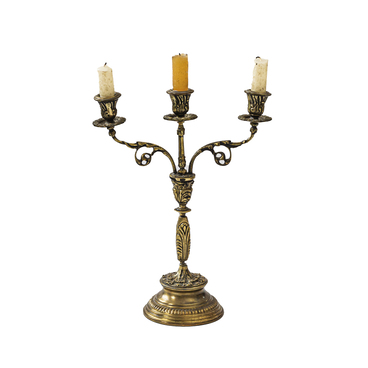The word “bebut” comes from the Turkish “bekbut”. “Bek” means “bent” and “but” means “hip”. Such daggers were in the arsenal of artillerymen of the Red and White armies during the Russian Civil War.
It was a slightly curved double-bladed steel dagger with two narrow lobes (grooves running along the blade). It was about 60 centimeters long and weighed about 750 grams.
A handguard did not protect the owner’s hand: the hilt of the dagger consisted only of the haft. It was carved out of wood in such a way that it was narrower in the middle than at the base. This way the blade was easier to hold in hand.
In the early 20th century, the rearmament of the Russian army began. The military department tried to select for each branch of the army a personal weapon that would suit best for specific combat missions. The most difficult task proved to be arming the artillerymen.
From the middle of the 19th century, the lower ranks of the artillery had slightly shorter dragoon soldier swords. From 1881, they had dragoon soldier sabers. However, with the advent of new rapid-fire guns, such weapons with long blades began to hinder artillerymen in battle. Committee of the Main Artillery Directorate at a special meeting recognized that another, more compact weapon should replace the saber. A shortened cleaver with a saw on the spine or an ax was offered as an alternative. However, the choice fell on a curved soldier dagger Bebut of the 1907 model.
Such a dagger was inferior in its combat characteristics to the sabers, and for Russian soldiers, this type of weapon was not familiar at all. In addition, it was inconvenient to use as a shank tool, that is, to perform engineering work in the field. Despite these disadvantages, in 1907, the dagger Bebut was adopted for service in the Russian army by order No. 287 of the Military Department. The replacement of sabers by daggers was carried out gradually. Gendarmes were the first to receive the bebuts. A year later, in 1908, it went into service of machine gunners, and in 1909 — lower ranks of artillery.
Officially, the Bebut dagger was in service with the army until the end of the Russian Civil War. However, in the 1920s it continued to be used by some law enforcement personnel.
It was a slightly curved double-bladed steel dagger with two narrow lobes (grooves running along the blade). It was about 60 centimeters long and weighed about 750 grams.
A handguard did not protect the owner’s hand: the hilt of the dagger consisted only of the haft. It was carved out of wood in such a way that it was narrower in the middle than at the base. This way the blade was easier to hold in hand.
In the early 20th century, the rearmament of the Russian army began. The military department tried to select for each branch of the army a personal weapon that would suit best for specific combat missions. The most difficult task proved to be arming the artillerymen.
From the middle of the 19th century, the lower ranks of the artillery had slightly shorter dragoon soldier swords. From 1881, they had dragoon soldier sabers. However, with the advent of new rapid-fire guns, such weapons with long blades began to hinder artillerymen in battle. Committee of the Main Artillery Directorate at a special meeting recognized that another, more compact weapon should replace the saber. A shortened cleaver with a saw on the spine or an ax was offered as an alternative. However, the choice fell on a curved soldier dagger Bebut of the 1907 model.
Such a dagger was inferior in its combat characteristics to the sabers, and for Russian soldiers, this type of weapon was not familiar at all. In addition, it was inconvenient to use as a shank tool, that is, to perform engineering work in the field. Despite these disadvantages, in 1907, the dagger Bebut was adopted for service in the Russian army by order No. 287 of the Military Department. The replacement of sabers by daggers was carried out gradually. Gendarmes were the first to receive the bebuts. A year later, in 1908, it went into service of machine gunners, and in 1909 — lower ranks of artillery.
Officially, the Bebut dagger was in service with the army until the end of the Russian Civil War. However, in the 1920s it continued to be used by some law enforcement personnel.



